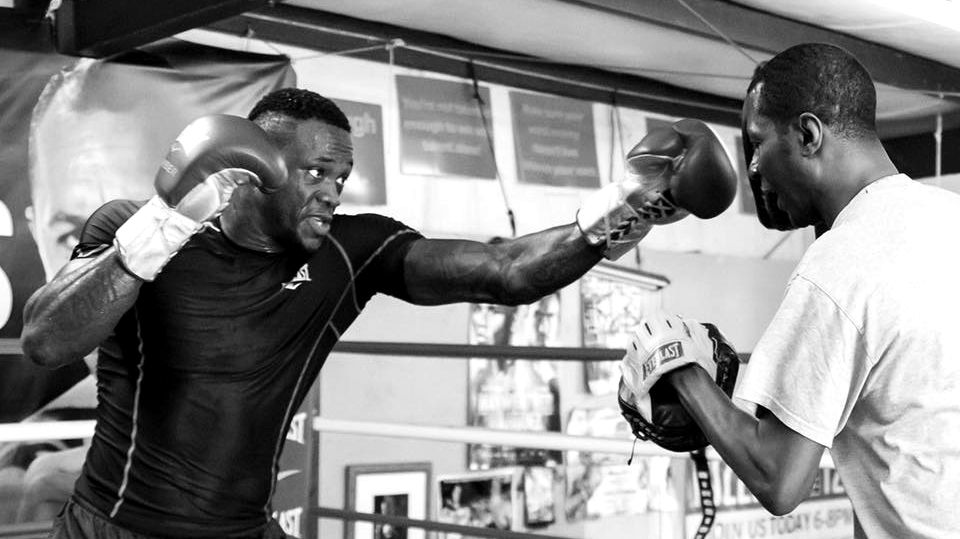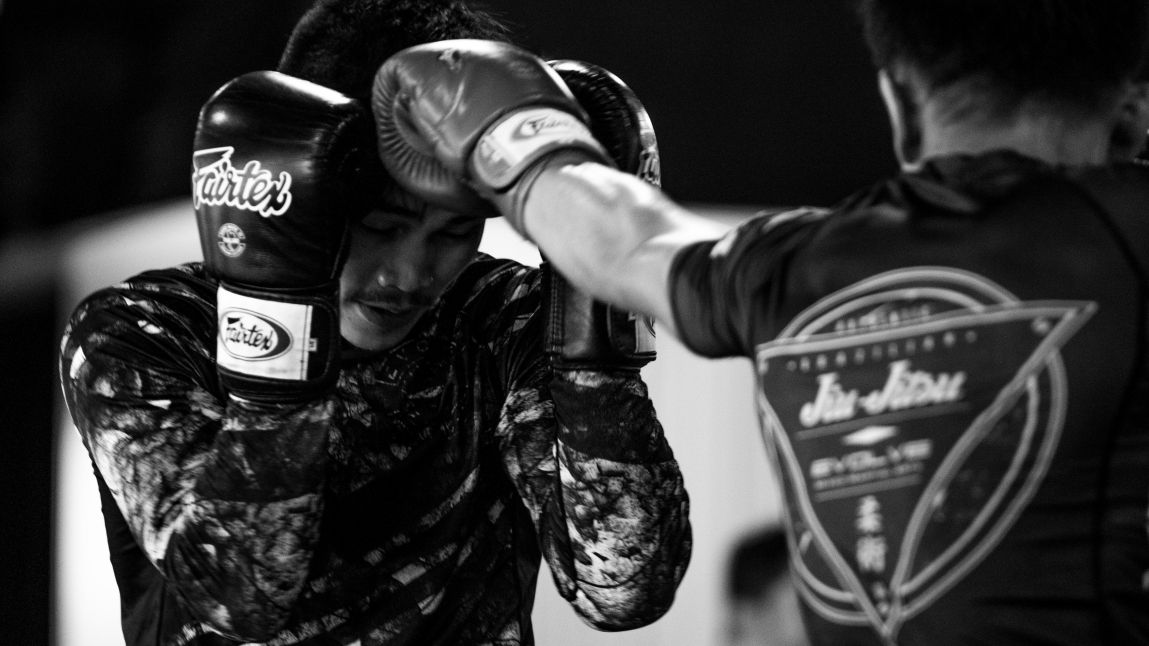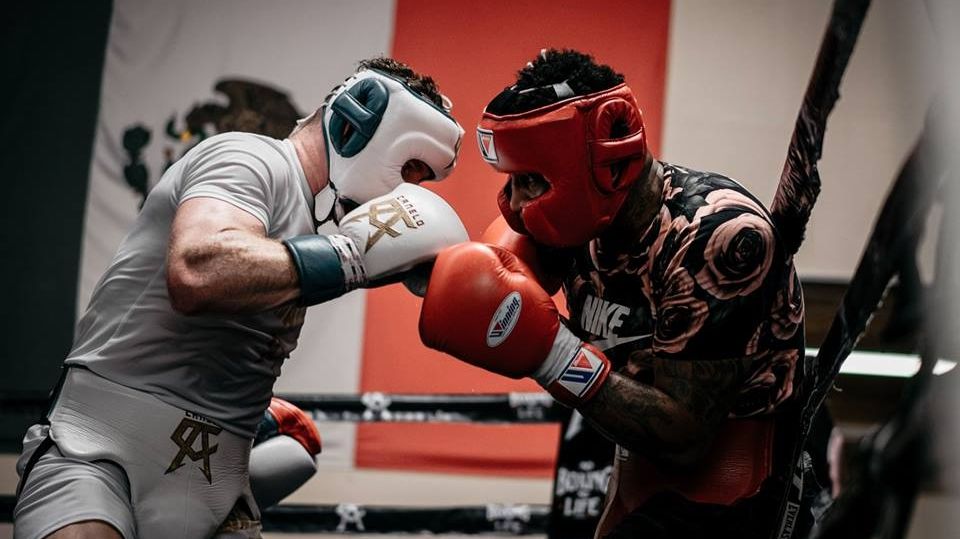The jab is by far the most important punch in boxing and is arguably the most underused. From controlling range to setting up combos, everything comes from the jab. It can hurt, distract, and stun your opponent. Most importantly of all, relentless jabbing is the best method of keeping opponents at bay.
Luckily, there are plenty of tricks and tips that will help you to improve your jab and control the pace of the fight, no matter who you are up against.
Correct Form
It is important that you have your jabbing technique down to a fine art. This means keeping your feet around shoulder width apart with a slight bend in your knees, keeping your chin down and your elbows tucked in. Try to throw your jab like a whip and have your lead shoulder hit your chin to protect your left side. Keep your rear hand guarding your jaw and return your lead hand to your face immediately.
To help keep your opponent from seeing the punch coming, your elbow should follow after your fist to avoid telegraphing. If you flip your hand too early your elbow will flare as you throw the punch which will indicate you are about to do, although this is a good tactic if you are throwing feints. A sharp jab hurts, that is why using the correct technique is so important.
Variation

There is more than one way to throw the jab. Knowing them is all well and good but to really get the most out of them you also need to know when to throw them. Relying on the standard jab is predictable – a good opponent will quickly figure you out and start countering if you continuously throw the same punch. With this in mind, we will look at some of the ways you can mix it up and keep your opponent guessing round after round.

Simple but effective, the basic jab is your best friend and will help you to sneak in and out of range. Get used to throwing it while moving laterally to work new angles and to make your opponent work. Stepping in and out as you throw will keep you out of the danger zone, as well as put a bit more leverage behind the punch. Keep in mind that doing this will widen your stance which may compromise your balance.
Try not to lean forward and do not drop your rear hand as you step in. If you are fortunate enough to have been blessed with a long reach, you can use it to your advantage with a pawing jab. The pawing jab was used to great effect by Thomas Hearns, who used it as a way to maintain distance. To do a pawing jab, simply leave your hand out momentarily after you throw. Doing so obscures your opponents’ vision, but be wary of overhands.
Working the Body

The body jab is a tactical punch to throw for a number of reasons. Naturally, you will need to dip low to throw it, and unless your opponent throws the same punch, chances are he will go straight over your head as you come in. Aim for the solar plexus at the top of the stomach. If your opponent steps in at the same time and your punch lands it will likely take his breath away.
This is a perfect way to start a round, making him miss whilst taking the wind out of him. This can put him off to a bad start and make him fear your jab straight out of the gate. The body jab is not the kind of punch that ends fights, but it will wear down and demoralize your opponent when used properly.
Look for openings, fighters who use a high guard are perfect victims for this attack. As you throw it, step in with your lead foot and then back out with your rear foot as the punch makes contact. Make sure you keep your rear hand covering the left-hand side of your face to protect you from counters.
Varying Speed and Power
Many beginners make the mistake of putting all their power into every punch, but this is not always necessary. You will quickly deplete your energy if you throw every punch with bad intentions. Many of your punches will not land or will be blocked, so throw occasional soft shots to keep your opponent busy.
The tap is a great punch for putting pressure on your opponent and disrupting his rhythm. Tapping his gloves when you are out of range puts pressure on your opponent and will either drive him back or cause him to swing and overextend, giving you an opening to counter. Do not be scared to double or triple up on it as you move in, constant pressure will keep your opponent from getting settled.

Another good use of this jab is when you are hurt or exhausted and your opponent is trying to line you up. The tap requires very little energy and creates breathing space. Try to rotate to your opponent’s outside away from his power hand if he is trying to walk you down, and step in with different jabs to keep him guessing. Watch Vasyl Lomachenko in order to see this tactic applied masterfully.
If you get the opportunity and your opponent is wide open, hit him with the power jab by stepping in and putting all of your force into it. When an aggressive opponent is pressing you, there is nothing stopping you from throwing out jab after jab as you evade. Doing so will help maintain the distance, but keep in mind that you need to change angles as you retreat to keep yourself from ending up on the ropes.
Practice Makes Perfect
Practice these techniques and you will soon become a nightmare in the ring. If you are worried about your punching power, a few weeks of explosive pushups, medicine ball throws, and sledgehammer exercises will improve your speed, power, and punch endurance.
The number one jab mistake is not throwing it out enough, so keep firing it off relentlessly even if your opponent is out of range. Doing so will keep him fearful of stepping into it.
























